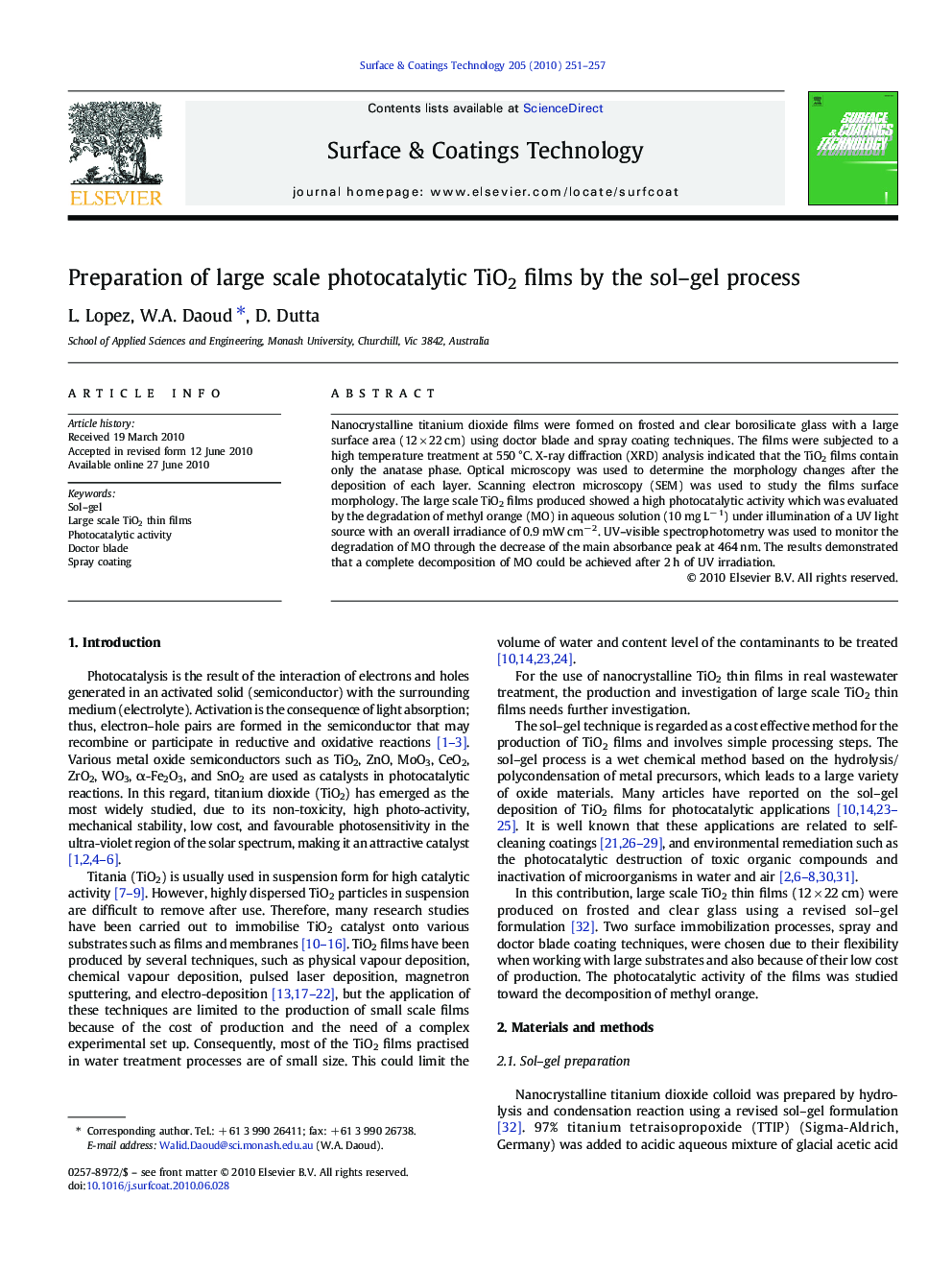| Article ID | Journal | Published Year | Pages | File Type |
|---|---|---|---|---|
| 1659057 | Surface and Coatings Technology | 2010 | 7 Pages |
Nanocrystalline titanium dioxide films were formed on frosted and clear borosilicate glass with a large surface area (12 × 22 cm) using doctor blade and spray coating techniques. The films were subjected to a high temperature treatment at 550 °C. X-ray diffraction (XRD) analysis indicated that the TiO2 films contain only the anatase phase. Optical microscopy was used to determine the morphology changes after the deposition of each layer. Scanning electron microscopy (SEM) was used to study the films surface morphology. The large scale TiO2 films produced showed a high photocatalytic activity which was evaluated by the degradation of methyl orange (MO) in aqueous solution (10 mg L− 1) under illumination of a UV light source with an overall irradiance of 0.9 mW cm− 2. UV–visible spectrophotometry was used to monitor the degradation of MO through the decrease of the main absorbance peak at 464 nm. The results demonstrated that a complete decomposition of MO could be achieved after 2 h of UV irradiation.
